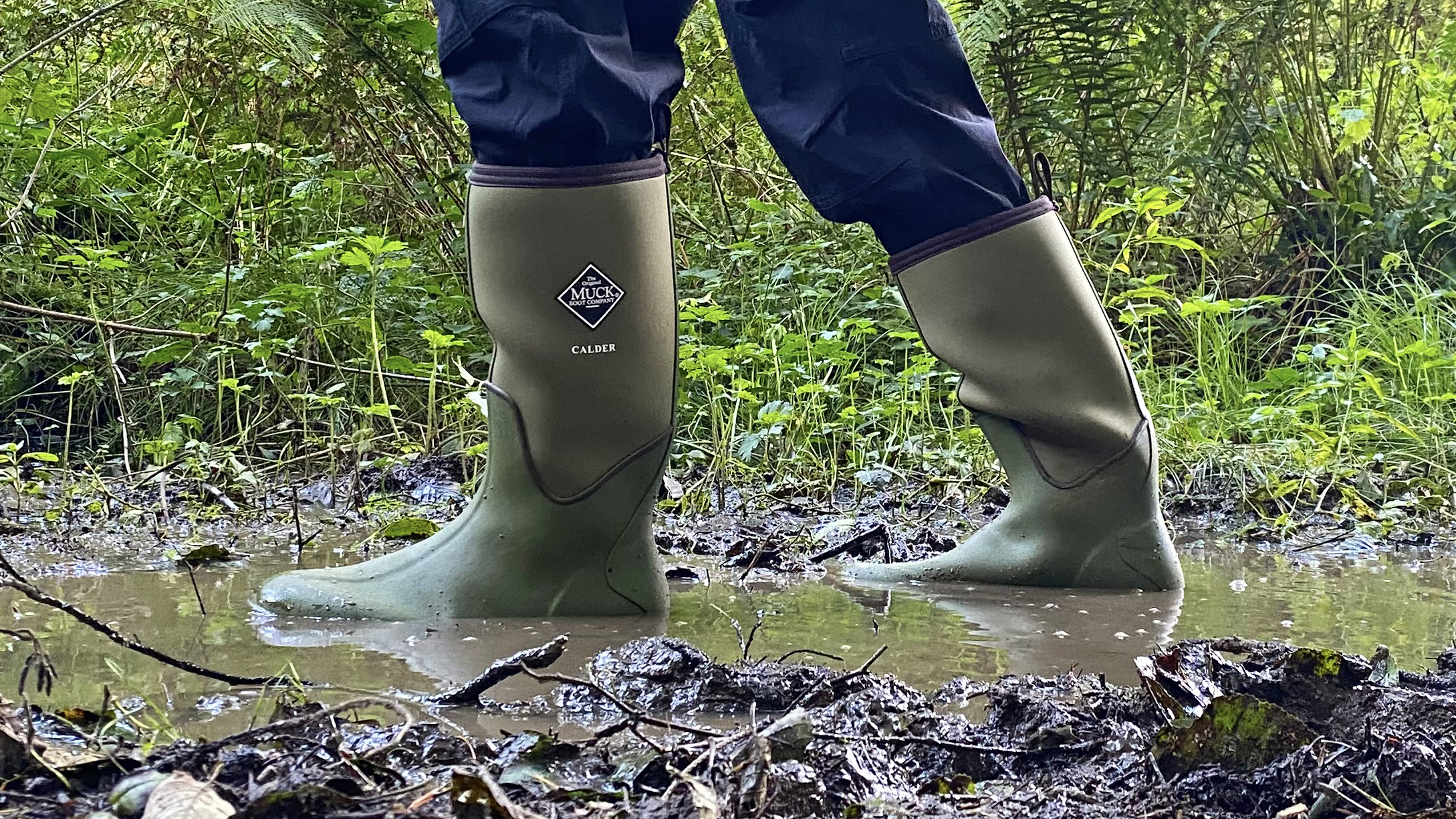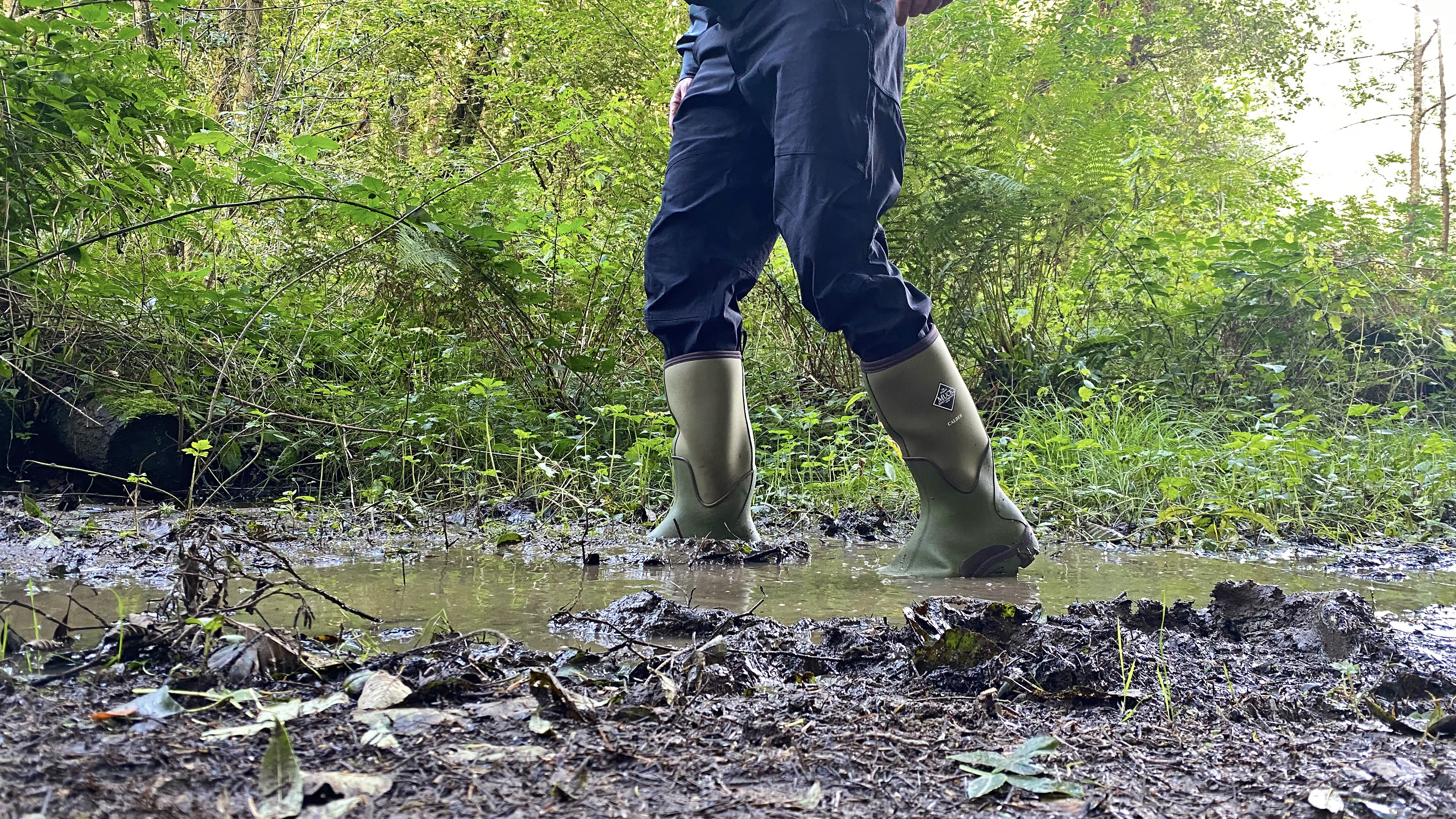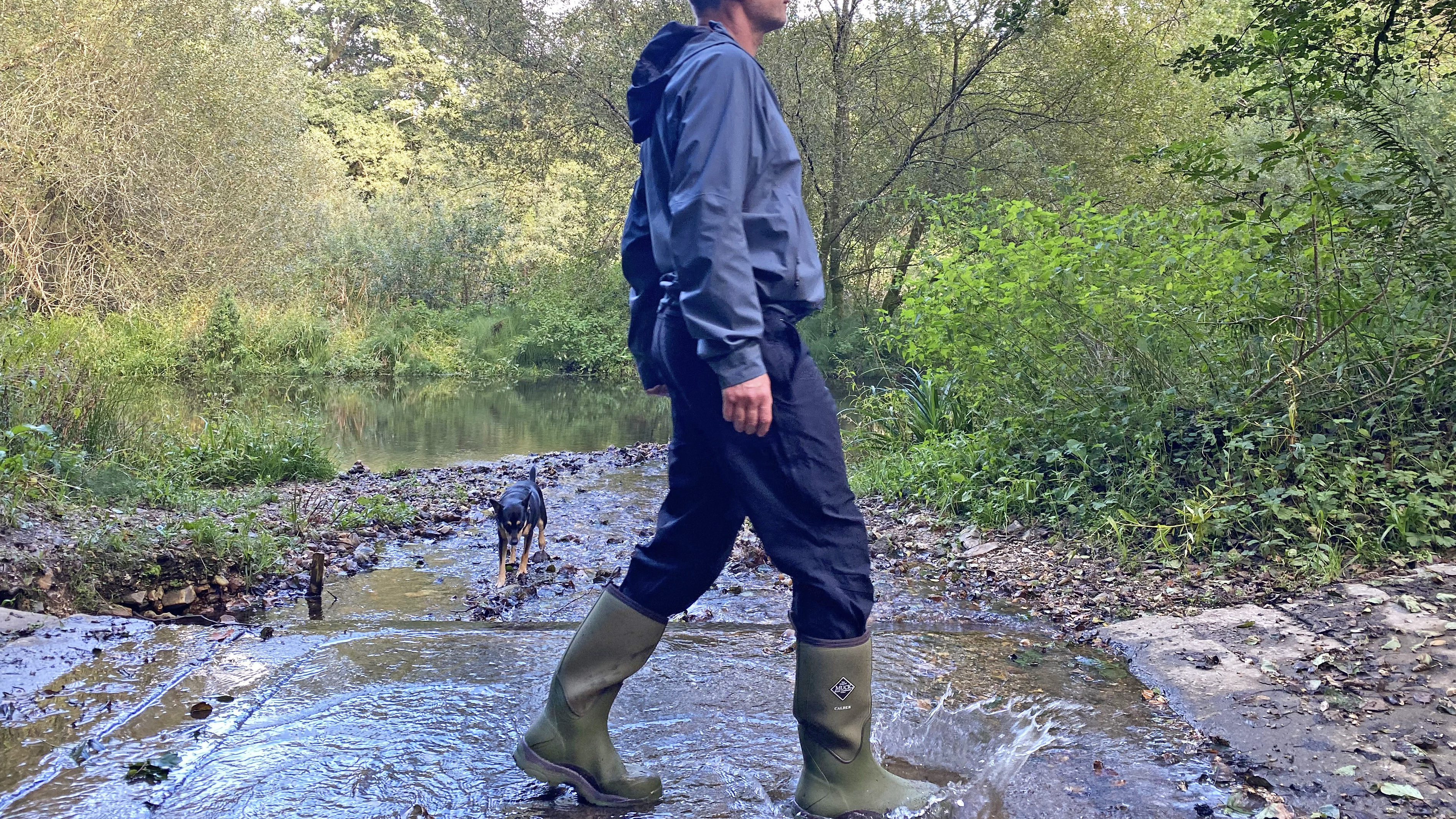Muck Boot Calder Boots review: stylish wellies with beyond-the-pale functionality
Versatile, comfortable and very capable wellington boots for mucky adventures on the wet and wild side all year round


The Calders from The Muck Boot Company go far above and beyond what most people expect a welly to do, providing waterproof performance (of course) backed up by excellent grip, thermal coverage, intelligently zoned foot protection and superb levels of comfort. Built to last from top-quality materials, these great gumboots combine a big splash of countryside sartorial style with hard worker-level functionality.
-
+
100% waterproof
-
+
Excellent grip on the outsole
-
+
Neoprene lining keeps feet warm
-
+
Steel shank in midsole provides support and protection
-
+
Good heel and toe support
-
+
Flexible high collar
-
-
Not available in half sizes
-
-
No recycled content used
-
-
Limited colours
-
-
No heel spur
-
-
Pricey compared to some other wellies
Why you can trust T3

Traditionally, wellington boots are viewed in one of two ways: either they’re seen as a purely functional piece of footwear for use during outdoor work or worn whilst wandering around in churned-up farm fields during wet and wild dog walks, splashing about in puddles and streams, and hoofing through pile of leaves and snow drifts; or they’re perceived as a stylish fashion statement, a festival must-have, so long as they’re oozing with rustic-chic. Subscribers to the first camp strongly prioritise function over form, while devotees to the latter will take the polar opposite approach.
Kicking their way right through the dividing line between these markets, the new unisex Calder Boots from mudlarking maestros The Original Muck Boot Company manage to offer superb levels of practical performance while also rocking quite a degree of sartorial swagger. For all these reasons, and more detailed below, we rate them as one of the best wellies on the market today. But just to make sure, we have been extensively wet-testing them in a range of mud-enveloped environments for the last few weeks.
[First reviewed October 2023]
Muck Boot Calder Boots review
Muck Boot Calder Boots review: price and availability
The Calder Boots are available now from The Muck Boot Company for an RRP price of £135 (approx. $164/ AU$ 260) in the UK and €162 across the EU. They are not yet offered in the United States or Australia.
Muck Boot Calder Boots review: specifications
- Weight per boot (size UK 11): 1,100g
- Colours: Olive / Black
- Upper: High-grade natural rubber with 4mm neoprene lining
- Membrane: PK mesh
- Sole: Rubber outsole topped by a steel shank
- Sizes (UK): 4–13
- Best for: Country walks in wet, muddy, snowy and potentially slippery conditions
Muck Boot Calder Boots review: design and materials

The midheight, unisex Calder Boots are 38cm/15in high, and have a robust rubber upper, lined with breathable PK mesh and 4mm neoprene, which goes right up and over the calf to finish just below the knee, where a collar keeps them tight to trouser legs and prevents splashes sneaking in.
There are reinforced sections around the toe box (which is triple the thickness of the main chassis) and heel area (quadruple thickness), and a strip of stiff rubber extends to the top of the boot on the front and rear, to help maintain its shape.
The thick rubber outsole features highly pronounced lugs of different shapes and sizes, which give the boots excellent grip in slippery conditions – to the extent that they provide as much traction and braking control as many of the best hiking boots out there.
Get all the latest news, reviews, deals and buying guides on gorgeous tech, home and active products from the T3 experts
And, like the best hiking boots and walking shoes, the construction of the Calders also includes antimicrobial and odour-control treatments, which have been employed in the football and inner of this boot, to manage the build up of bad smells.
There is no dedicated midsole material, but the deep rubber outsole provides the kind of cushioning and energy return usually supplied by substances like EVA. A hidden steel shank runs the length of the boot to supply some rigidity and substance, and to protect the bottom of your feet.
Muck Boot Calder Boots review: comfort and performance

I have been testing a pair of size 11 Calder Boots in occasionally biblically wet autumnal weather and amongst some seriously muddy and boggy conditions over the past month, and I have been extremely impressed by both the boot’s performance and comfort levels.
The midheight neoprene neck of the boot hugs the calf to deter the ingress of grit and water and design offers fantastic levels of flex, which provide you with a full range of leg movement while still supplying 100% reliable waterproof protection. This makes these boots much more versatile than the average welly, because you can comfortably hike up and down steep hills in them.
This degree of reliable functionality is further enhanced by the steel shank that runs along the foot, and the excellent toothy outsole, which provides traction when you’re ascending and braking control during descents.

My feet felt fully protected whenever I was wearing the Calder Boots, thanks to the triple-thickness toe cap and super chunky heel cup. Additional protective layers also extend around the instep and outer area of the foot, which gave me confidence when wading through deep murky water, bogs and gloopy mud, where sharp sticks and stones could have been lurking.
I’m not so sure about the claimed degree of breathability offered by the PK mesh, the performance of which seems somewhat hampered by the neoprene – I felt these boots ran a little on the warm side, which is fine in late autumn, winter and early spring, but might be more of an issue in summer (I don't generally wear wellies when it's hot, but boot-rocking festival goers should perhaps bear this in mind).
There is a pull loop at the top of the boot to help you get the Calders on, but I think they would also benefit from the inclusion of heel spur to help you get them off at the end of whatever filthy foray or mucky adventure you have been out enjoying.
Muck Boot Calder Boots review: verdict

I love the Calder Boots for their versatility. I can (and do) wear them to walk the dog across ploughed fields and along wet and/or snowy trails, or venture through bogs, muddy woods and streams safe in the knowledge that my feet will stay totally dry and safe. Plus I can (and mostly will) flounce around a festival site in them, listening to bands and still feeling fairly well dressed for the occasion.
Best of all, though, I can actually pull them on and go for a proper hike, enjoying a full range of leg movement (thanks to the neoprene top), great underfoot grip and massive amounts of protection and warmth amid even the muckiest of environments.

Author of Caving, Canyoning, Coasteering…, a recently released book about all kinds of outdoor adventures around Britain, Pat Kinsella has been writing about outdoor pursuits and adventure sports for two decades. In pursuit of stories he’s canoed Canada’s Yukon River, climbed Mont Blanc and Kilimanjaro, skied and mountain biked across the Norwegian Alps, run ultras across the roof of Mauritius and through the hills of the Himalayas, and set short-lived speed records for trail-running Australia’s highest peaks and New Zealand’s nine Great Walks. A former editor of several Australian magazines he’s a longtime contributor to publications including Sidetracked, Outdoor, National Geographic Traveller, Trail Running, The Great Outdoors, Outdoor Fitness and Adventure Travel, and a regular writer for Lonely Planet (for whom he compiled, edited and co-wrote the Atlas of Adventure, a guide to outdoor pursuits around the globe). He’s authored guides to exploring the coastline and countryside of Devon and Dorset, and recently wrote a book about pub walks. Follow Pat's adventures on Strava and instagram.